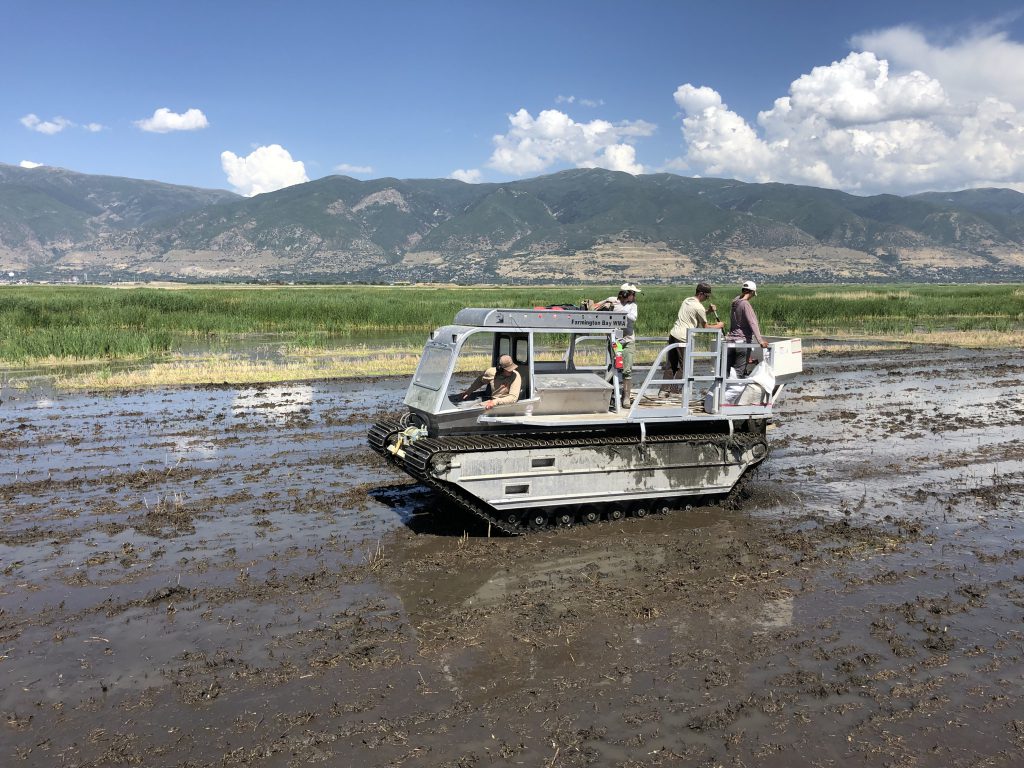
SALT LAKE CITY – The ongoing work of controlling the spread and mitigating the impact of an invasive plant species, Phragmites australis, on the shoreline of Great Salt Lake and Utah Lake continued to see success in 2022.
This year a total of 6,312 acres of phragmites-infested shoreline were treated around Great Salt Lake and Utah Lake by the Division of Forestry, Fire and State Lands and partners.
An integrated approach is being used to remove Phragmites and restore wetlands. Herbicide spraying, mowing, grazing, burning, water management, and revegetation are utilized. Appropriate timing of treatments is crucial.
“We are very grateful for all the outstanding partners that make this work possible,“ said Keith Hambrecht, Invasive Species Coordinator for the Division of Forestry, Fire and State Lands.
On Utah Lake, a total of 2,086 acres were treated in 2022. A 74 percent reduction in phragmites was realized in 2022.
The division partnered with Utah County and the Utah Lake Commission to fund and complete the work along the shoreline of Utah Lake. These successful partnerships have been crucial for the reestablishment of native plant species throughout the shoreline wetlands, resulting in increased wildlife habitat and recreation access.
On Great Salt Lake, over 12,000 acres have been treated since 2016. In 2022 a total of 4,227 acres were treated. A large ongoing project area along the southern shoreline of Farmington Bay has seen an approximate 65% reduction in Phragmites cover.
The Utah Division of Wildlife Resources and Utah State University have partnered with the division and helped with the removal of phragmites and restoration of the wetlands around Great Salt Lake. Each season Wildlife Resources also controls Phragmites within their Waterfowl Management Areas.
“We are thrilled at the progress that has been made on invasive Phragmites on Utah’s Sovereign Lands,’ says Hambrecht. “It is exciting to see all this hard work pay off and witness the landscape transform.”
This winter, follow-up treatments will continue with mowing and trampling down of dead Phragmites. Planning is ongoing to follow up on current projects, treat additional acres, and revegetate and monitor areas to complete the restoration process.
According to Hambrecht, future work will be required to restore the shorelines of both Great Salt Lake and Utah Lake with native plant species.
“We still have a lot of work to do,” he says, “but the results we are seeing are very encouraging.”
###
